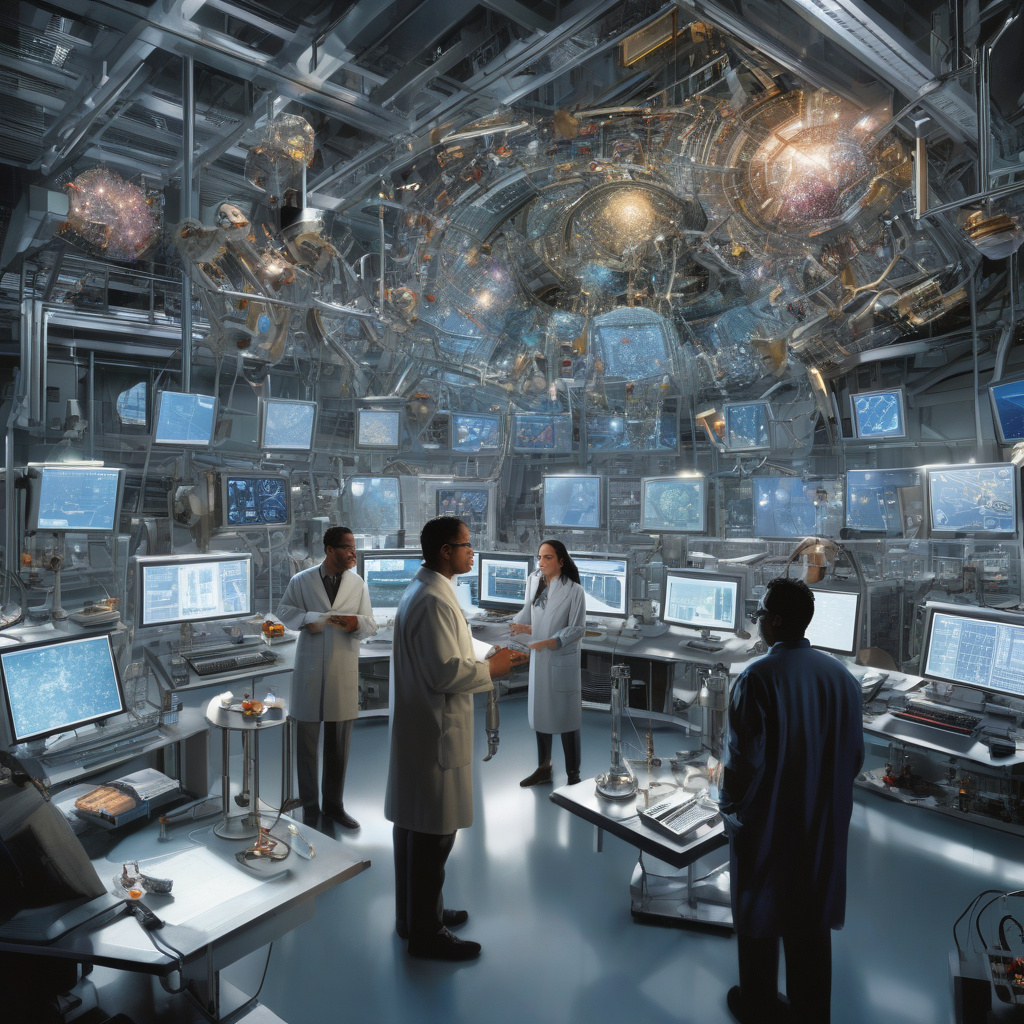Unveiling the Elusive: ATLAS Detects Rare Higgs Boson Decays Occurring Once in Every 5,000 Events
Imagine a particle so elusive, so rare, that it’s difficult even to catch a glimpse. The Higgs boson, often referred to as the “God particle,” is one of the most sought-after particles in the field of particle physics. Recently, the ATLAS experiment at CERN has made a groundbreaking discovery, detecting rare Higgs boson decays that occur once in every 5,000 events. This finding has opened up new possibilities for understanding the fundamental building blocks of the universe.
The Standard Model of particle physics predicts the existence of the Higgs boson, which is responsible for giving particles their mass. However, observing the Higgs boson in its various decay modes is no easy feat. The particle decays almost instantaneously into other particles, making it challenging to detect. Scientists have been working tirelessly to observe rare decay processes of the Higgs boson to test the predictions of the Standard Model and search for new physics beyond it.
The ATLAS experiment, one of the largest particle detectors at the Large Hadron Collider (LHC), has been at the forefront of the search for rare Higgs boson decays. By analyzing data from proton-proton collisions at the LHC, the ATLAS collaboration has identified Higgs boson decays that occur once in every 5,000 events. This discovery represents a significant milestone in particle physics research and opens up new possibilities for studying the properties of the Higgs boson.
One of the rare Higgs boson decays detected by ATLAS is the decay of the Higgs boson into a muon and antimuon pair. Muons are fundamental particles similar to electrons but heavier, and their detection in association with the Higgs boson is a crucial step in understanding its properties. By studying these rare decay processes, scientists can probe the interactions of the Higgs boson with other particles and test the predictions of theoretical models.
The detection of rare Higgs boson decays by ATLAS demonstrates the precision and sensitivity of the experimental techniques used at the LHC. Advanced technologies such as tracking detectors, calorimeters, and muon spectrometers play a crucial role in identifying and reconstructing the particles produced in high-energy collisions. The collaboration between experimentalists, theorists, and engineers has been essential in achieving this remarkable feat.
Furthermore, the discovery of rare Higgs boson decays paves the way for future studies of the Higgs sector and potential new physics phenomena. By collecting more data and refining their analysis techniques, scientists hope to unravel the mysteries surrounding the Higgs boson and its role in the universe. The ATLAS experiment will continue to push the boundaries of particle physics research and explore the unknown territories of the subatomic world.
In conclusion, the detection of rare Higgs boson decays by the ATLAS experiment represents a significant advancement in our understanding of the fundamental forces and particles that govern the universe. This groundbreaking discovery not only validates the predictions of the Standard Model but also hints at the existence of new physics beyond our current understanding. As scientists delve deeper into the mysteries of the Higgs boson, one thing is clear: the quest for knowledge at the frontiers of particle physics is far from over.
ATLAS, Higgs boson, Particle physics, LHC, Rare decays












